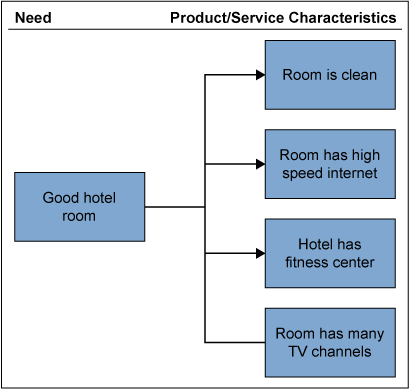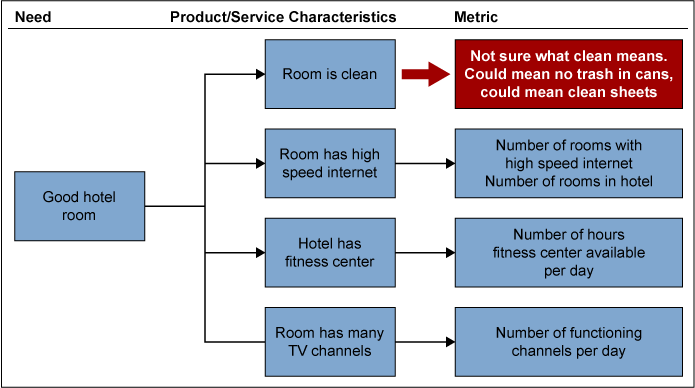
To drive improvement through Lean Six Sigma and other continuous improvement projects, it is imperative for practitioners to determine first what is important to the customers who are affected by the process. Customers can take on a variety of different views. Listed below are examples of typical customers identified in a SIPOC diagram (suppliers, inputs, process, outputs, customers), or by using other stakeholder tools:
- External customers – Those who receive the product, service or output of the process and pay the organization for the product or service
- Internal customer – The next step in the process or the overall business itself
- Organization – The stakeholders or leaders of the organization who want the process to operate efficiently
- Employees – Those who work on the process
In this article, we will focus primarily on external customers. The true bottom line in defining the voice of the customer (VOC) is understanding how to assess whether a process is operating effectively and efficiently. The effectiveness of the output of the process is typically a concern of the customer, while efficiency is typically a concern of the business.
Defining Customer Requirements
To adequately determine customer requirements, practitioners need to conduct discussions with the customer. Through these conversations, practitioners typically gather generic customer needs. Practitioners must go on to translate these generic needs into specific items called critical-to-quality requirements (CTQs). To verify that the CTQs are specific enough, the true test is to ask, “Can a formula or detailed operational definition be written to describe this need?” The needs should be detailed enough that they allow practitioners to align improvement or design efforts with customer requirements.
To begin the translation to specific CTQs, consider the typical generic needs of the customer (in this case, a combination of internal and external customers):
- Cost: How efficient is the process operating from the perspective of the business? In other words, what does it cost the business to produce the output?
- Timeliness: Delivery to the customers when they want it
- Quality: Did the customers get what they wanted? Did the product or service meet specifications?
To get to the CTQs, practitioners need to distinguish first between the product characteristics and process (service) characteristics. The product (the output of the process) is what should fulfill the customer’s needs. A comparison is made below using the automotive industry as an example:
Table 1: Comparison of Product and Process Characteristic
| Type of Need | Product Characteristics | Process Characteristics |
| Cost | What does it cost consumers to purchase the car? | What does it cost to produce it, and is the margin generated satisfactory? |
| Timeliness | Can consumers get the product when they want it? | How well have we satisfied the customer regarding delivery? |
| Quality | Does it meet the consumer needs and the advertised specifications? | How well have we satisfied the customer regarding quality? |
To understand the needs of the business and customer, it is crucial to ask questions. To better illustrate the questioning process, suppose you are a manager of a hotel and plan on asking business travelers what is important to them relative to a hotel room.
The customers respond very generically: “I want a good hotel room.” This is the highest level of the customer needs or CTQs, but it offers little insight into specifics that you, a hotel manager, need. You need to define what “good” means by asking the customer to give further specifications. The responses the manager receives are shown in the tree structure in Figure 1.

If you can write a formula for a measurement or metric around these statements, or a very specific operational definition, you are close to defining the true need of the customer. If not, you must repeat this process until you can express each of the needs as a specific, measurable formula (Figure 2).

In Figure 2, the manager has been able to generate three of the needs to specific, measureable elements. The first one, however, needs further discussion. What does “clean” mean? How can you measure cleanliness? The customers may say clean means the following:
- No trash in the waste basket (pretty good operational definition)
- Clean sheets and towels (Is this defined well enough? How would it be measured?)
- Clean bathroom (Is this defined well enough? How would it be measured?)
How can the above definitions be measured? The following could be metrics associated with the CTQs:
- No trash in the waste basket – the number of rooms with waste baskets that have trash each day/number of rooms
- Clean sheets and towels – the number of days since the sheets and towels were changed
- Clean bathroom – the definition of “clean bathroom” needs to be refined further by taking the questioning to another level of detail
At this point, we have taken all the general-need statements, or CTQs, down to specific, measureable items.
This process should be repeated until such time that all customer needs can be objectively measured. Next, practitioners need to isolate which needs customers really care about. Remember that the needs of the customer may be in conflict with the needs of the business, so it is important to determine how any conflicts will be rationalized up front. Once the specification activity is complete, the following template can be used to summarize the results.
Figure 3: VOC Report Template
| Results of the VOC
Voice of Customer
VOC was determined by…
|